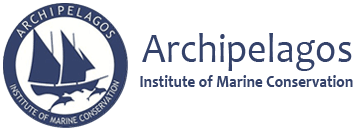The Terrestrial Team from the Archipelagos Institute has focused on a project about the distribution and habitat preferences of 
The Mediterranean chameleon spends most of its time in the vegetation; movements on the ground occur only occasionally. It has been found that less-dense vegetation and close proximity to water streams are preferred. The adults usually inhabit a different habitat than the hatchlings due to a varying diet and the tendency of cannibalism. However, no information is yet available on exactly which habitat is being selected by females to lay their eggs in.
The study method consists of surveys in order to find the diurnal chameleons at their roosting sites. Their pale skin color at night makes them easy to find within the vegetation. For each observation, the GPS coordinates, weather conditions, roosting height, vegetation used for roosting, size of the chameleon, and the sex are recorded. Subsequently, the observations are being marked on a map to collect information on the habitat use with particular focus on the areas in which hatchlings occur. The additional information collected will be used to analyze their vegetation preferences and any differences in behavior with varying weather conditions.

The final maps will assist in protecting and conserving the species in its natural habitat on Samos Island. The knowledge regarding their habitat use and important areas for reproduction can be used to protect the species from the threats they are facing.
Maria Knabe, Albert-Ludwig-University Freiburg, Germany

